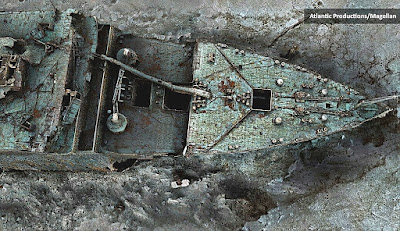The independent submarine missing from the Titanic: A digital image taken from a scan that was released by Atlantic/Magellan on Thursday, May 18, 2023, shows a view of the bow of the Titanic in the Atlantic Ocean, which was created using deep-sea mapping.
Crew confirmed to be on board the $250,000-a-trip vessel that was lost in the Atlantic Ariana Baio Mon, June 19, 2023, 8:40 PM GMT+51 min read 135 ASSOCIATED PRESS) A deep-sea mapping-created view of the Titanic's bow in the Atlantic Ocean can be seen in this grab from a digital scan that was published by Atlantic/Magellan on May 18, 2023.
The 1st District Northeast Coast Guard informed the BBC on Monday that a submersible used to take visitors on tours of the Titanic wreck has vanished in the Atlantic Ocean.
Visitors frequently take tours of the well-known shipwreck with small submersibles—watercrafts that are designed to operate underwater but are distinct from submarines.
The wreck of the Titanic can be found approximately 380 nautical miles off the coast of Newfoundland, Canada, at a depth of 12,500 feet at the bottom of the Atlantic Ocean.
According to the report, a search and rescue operation is currently underway. It is not clear how the submersible got lost or whether anyone was on board at the time.
The US Coast Guard has been contacted by The Independent for comment.
The activities that are carried out in North New Jersey, New York, Connecticut, Rhode Island, Massachusetts, New Hampshire, Vermont, and Maine are the responsibility of the 1st District Northeast branch of the US Coast Guard, which has its headquarters in Boston.
It is unclear where the submersible may have vanished in the ocean.
Trips to see the Titanic shipwreck have become increasingly popular in recent years.
To go on an eight-day tour of the historic shipwreck with trained crewmembers and pay anywhere from $100,000 to $230,000, people can pay.
In 1912, while making its maiden voyage from Southampton, England, to New York, New York, the Titanic struck an iceberg and sank. Over 1,500 of the 2,200 passengers and crew members perished.
In 1986, the United States of America enacted the Titanic Maritime Memorial Act, which established the RMS Titanic as an international maritime memorial and authorized reasonable research, exploration, and salvage activities.
People are allowed to look at or study the Titanic so long as the research or exploration does not alter or disturb it.
